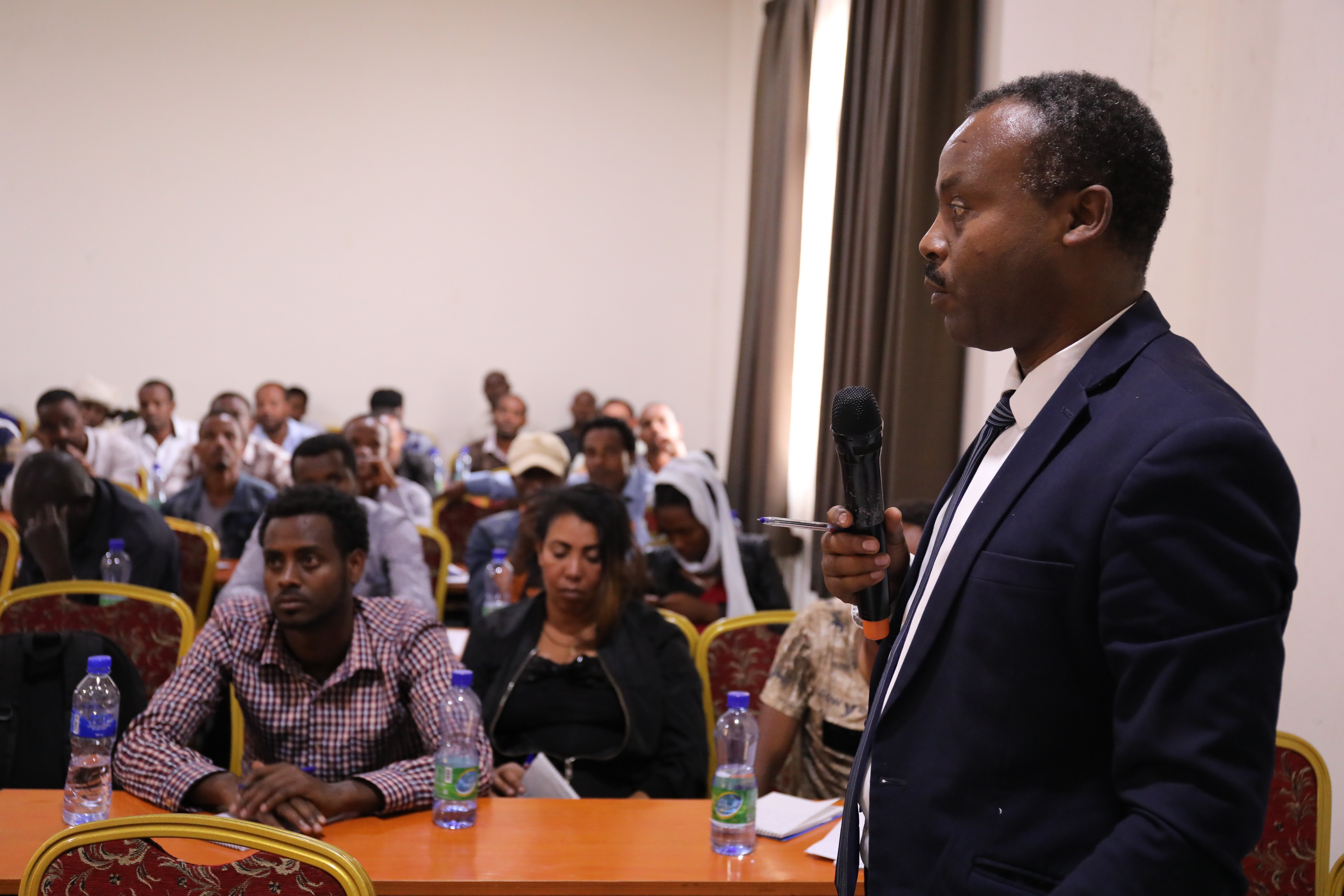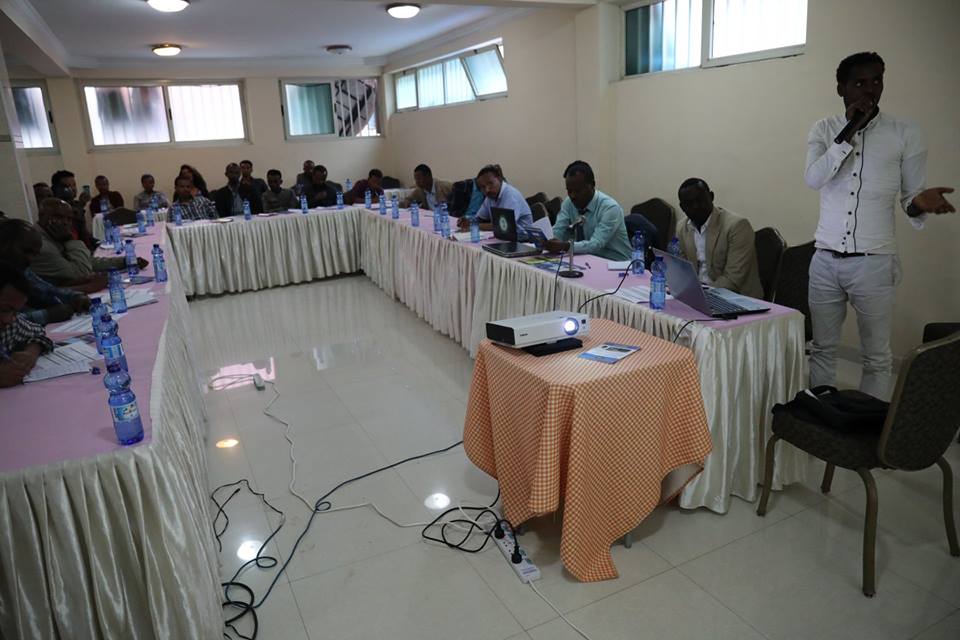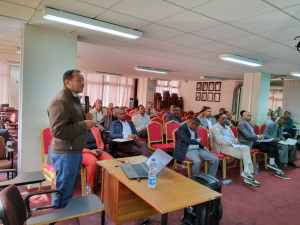Ethiopian Biodiversity Institute, Animal biodiversity directorate in collaboration with African union Interafrican Bureau for Resource conducted two consecutive Workshops on Evaluation of the Implementation of Ethiopian National strategy and action plan for conservation and sustainable utilization of animal genetic resources from 5-6 November and 8-9 November,2018 at Adama, Dire International Hotel
Dr. Feleke Woldeyes, deputy general Director of Ethiopian Biodiversity Institute, in his opening speech, stated that Ethiopia is a country of great geographic diversity. The latitudinal variation of the country ranges from 126 mbsl in the Danakil depression to the highest peak of 4,620 meters above sea level (masl) on Mount Ras Dashen so that the country is endowed with diverse ecosystems inhabited by an abundant diversity of animals genetic resources. The country geographical proximity to the historical entry point of many breeds in Africa specially Ethiopia to have diverse topographic and climatic conditions as well as the wide ranging production systems have further contributed to the existence of a large diversity of. Indigenous breeds of farm animal genetic resources are the one that focus on.
He also explains that Ethiopia is gifted country in animals genetic resources but due to limited awareness we did not let us conserve our genetic resource properly. Hence some of the genetic resources are in danger to extinct and he urged the participant to play their own part to conserve and utilize our resources properly.
Mr. Abreham Assefa, Animal biodiversity directorate director, presented on the title animal genetic resources, treats on animal genetic resources, major achievement in characterization, insitu and exsitu conservation. In his explanation the country major animal production systems and related animal genetic resources, their diversity, conservation, utilization, relative importance, and provides an overview of the status.
Mr. Abebe hailu on his part explained about Ethiopian national strategy and plan of action for conservation and sustainable utilization of animal genetic resource. On his presentation he provides an overview of the present policies, strategies, programs and management practices; analysis of future demands, trends of animal products, changes in production systems and their impact on animal genetic resources. He also explains the assessment of the current and future national population along with the capacity building requirements to undertake activities related to animal genetic resources opportunities, challenges and strategic priorities for action.
The researchers in directorate and invited researchers presented different title and discussed on the issues. Farm animals are an integral part of the Ethiopian agricultural fabric. They are the country source of food, raw materials, cash and foreign exchange earnings as well as its social and cultural identity. They are one of the input suppliers to the manufacturing sector of the country. The contribution of livestock to the total agricultural GDP and national foreign currency earnings for the country is very high.
Ethiopia needs to further develop efficient infrastructure to utilize its animal genetic resources opportunities. There is a need to urgently develop appropriate breeding programs for the different livestock breeds adapted to the different ecosystem. A top priority for the utilization and conservation of animal genetic resource in the country is the characterization of different species of farm animals and identifies merits of breeds.
As researchers disclose there is a need for capacity building in farm animal use, development and conservation as well as implementing Animal genetic resources programs. The national policy on biodiversity conservation and development is formulated based on the rationale that the conservation of biodiversity is one of the conditions of overall national economic development.




